Rakuten Tokyo Fashion Week AW 2024 - Yokogao’s highlights
© tanakadaisuke│picture by Shimpei Mito
Fashion has its big weeks twice every year, days when the months of preparation, hard work, and overloading creativity are presented to the world. Aside from the usual and most talked-about cities, Tokyo, with its long and fascinating cultural and aesthetic traditions, is en route to becoming part of the top fashion weeks.
On our first coverage of Rakuten Fashion Week for the Autumn/Winter 2024 season, which took place between March 11th and 16th, we discovered an immense amount of complex, intriguing, and thoughtful proposals, often mixing inspiration from the past and the present and placing a lot of importance on the quality of the process, the storytelling, the materials and details, and the construction of unique and innovative silhouettes, something that Japanese designers excel at.
The voice of the streets
Tokyo is one of the most interesting places in the world when it comes to streetwear. We could witness how prominent it is, not only amongst the so-called fashionistas but in general; the streets are filled with people sporting characteristic brands and pieces from this style in a very natural way. A big part of pulling off a good streetwear look can be attributed to the effortless aura the wearer exudes. There's a characteristic type of confidence in the way streetwear is worn in Japan, and getting to know some of the brands behind the pieces we've seen on the streets explains why that occurs.
Kamiya
Kamiya presents what could be defined as the quintessential streetwear collection, with the runway location being none other than, you guessed it, a street. With the city lights of Shibuya Hyakken-dana in the background and the assistants standing on the sides of the narrow street, the models began strutting down to the rhythm of the live percussion played by a marching band.
The show consisted of the coolest kids you could think of, wearing garments as cool as them. Lots of distressed denim, flowy silhouettes in outer garments, total camo looks, delicate transparencies combined with harsher pieces, washed-out tones, big bomber jackets, and big coats—Koji Kamiya gave to the collection a vintage feel to it despite the obvious modernity of the clothes. The bandanas, the rockabilly inspired hairstyles, and the bruises on the models faces were all a look at the past, one that felt just as raw and real as the Shibuya streets used to be.
© Kamiya│pictures by Shun Mizuno
Fake As Flowers
Having a loyal following is a phenomenon very common in the streetwear realm, where the sense of belonging is strong and the community feeling surrounding the brands plays an important part in the impact and influence they have on their audience, and FAF, or Fake As Flowers, is a good example. This is the first time the brand led by Kazuho Arai and Tsukasa Takabayashi presents a runway show, and they do so after winning the Tokyo Fashion Award 2024.
The collection named Recirculation represents a self-analysis of their own designs, patterns, and silhouettes, refining and updating them. The result is very neat and balanced; colourful and fun pieces are mixed with more minimalistic ones, with thoughtful layering and styling shining in every look. The beautiful diversity of the casting, the numerous open mics where each model stood up, and the whole group of them sitting down at the back waiting for their turn made this show feel more like a nice gathering of tasteful good friends than a runway show, and that's the core of a community.
The process and the thought
It is known the care with which the Japanese treat any discipline they are working on, and fashion is no exception. This care is reflected in the thoughtfulness applied to every decision that involves the long and conscious process of creating a garment, from the silhouettes and the volumes and how they interact with the body to the fabrics and materials used to turn the ideas into reality.
Hidesign
On Hidesign, we could witness this extreme study of what a piece of clothing can signify to the wearer with a very utilitarian approach that does not appear randomly. Hidesign is primarily a corporation dedicated to the making of workwear attire, and even if it's not something very talked about, this portion of the industry is as part of the fashion world as the flashiest brand you can think of. The difference comes in the more serious considerations of aspects such as the ergonomy of the patterns, the resistance of the materials, or the placement of certain details, all for the sake and security of the worker.
All the studies and expertise needed to execute these pieces are displayed for the world to see, and taking into consideration how a good quantity of trends are inspired by workwear pieces and shapes, it feels very current and interesting. The technical materials, the comfortable and very stylish silhouettes, and the multiple features such as multiple pockets, metallic features, drawcords, and belts everywhere completely erase the imaginary line between useful and fashionable, reinforced by the additional confidence that having a name that knows perfectly how to do it makes this a strong collection. It is also nice to see a team take the final bow.
© Hidesign
Mikage Shin
As for Mikage Shin, the exploration of volumes and silhouettes plus the richness brought by the interaction of different fabrics, colours, and textures reflect the same level of thought put into the design process, but this time driven to a more aesthetic territory rather than being focused on functionality. With Game Changer as the main concept, the brand is focused on a meaningful change that goes beyond just one collection, signifying a fresh start after four years in the market. There is a visible appreciation for the craftsmanship, with the denim pieces being a great subject for the exploration of different techniques and finishes, following a similar process to hidesign, where we also saw interestingly modified denim garments.
The tailored inspired pieces mixed with the less traditional ones make a good match, and the different details, such as the trompe-l'œil prints, the unconventional layering with fur or lace, and the predominantly darker shades disrupted by a couple of bright and bubbly looks, shine brightly amongst the white marble floors and walls and elevate the collection in a subtle and natural way.
© Mikage Shin
Memories from the past
There is something meaningful and introspective behind some of the creations we could witness on the runways. Their appearance at first sight is very delicate, elegant, and even romantic, but the beauty and grace are just the result of a much more personal process where the aesthetic result comes naturally after working intimately and passionately on developing the concepts, concepts that usually look back at the creator's life.
Chika Kisada
For designers, it is usual to tap into our own personal experiences when searching for inspiration for their work, and the past and younger years are always periods of time with endless references to fixate on and to explore in the search of some topics or concepts that have carried on into our adult lives. For Chika Kisada, this important element of her childhood is ballet. Reminiscing about it not only with the location being a dance studio but with young ballerinas opening the show, the collection was a reinterpretation of well-known codes and elements extracted from this world brought up to a more every-day garments territory.
Using her expertise at mixing harmonically strong silhouettes and tailored pieces with much more fluid, soft, and transparent fabrics, Desert Flowers is the perfect balance between the dreamy and ethereal side of ballet and the equally important and always present technical, raw, and intricate character of it.
© Chika Kisada
Fetico
Also referencing her own personal taste, which has stayed consistent ever since her early years, and that has been evident through all her collections ever since her launch in 2020, Fetico takes the iconic Adams family and their very recognisable style as muses. Wednesday Adams has been an inspiration not only on the formal side but also on the philosophy and morals of Emi Funayama, who learned about the fearlessness, confidence, and eccentricity of this character and used it as fuel for her creative path.
The collection has a gothic feel to it, with distinctive elements like cross-like pattern constructions, velvet, lace, veils, and a monochromatic colour palette that matches perfectly with the inherent sensual and lingerie-esque aura that Fetico usually exudes. The division between the outerwear and the underwear is completely erased, resulting in a very intimate collection that is equally striking and tasteful.
© Fetico
Haengnae
With a quite similar colour selection to Fetico, Haengnae makes a triumphant debut at Rakuten Fashion Week after winning recognitions such as the Tokyo Fashion Award 2024 and the JFW Next Brand Award 2023 Special Recognition Award. This collection is also a retrospective, but in a more general way, studying and analysing the different elements that form the essence of the brand and that have granted it the recognition and reputation it currently has.
Under the name of Loving Philosophy, Korean designer Anna Choi showcases opulent volumes, dramatic silhouettes, and very detailed garment construction pieces that graced the runway one after the other, with striking reds, blacks, and beiges unifying all the looks. Glancing back at the past, rethinking, and holding a great respect for the past always results in something great.
© Haengnae
Good. Clothes.
One thing about Japanese designers: they know how to make good clothes. Their technical level is among the highest in the whole industry. If there's even a hint of disbelief, just think about the names that have come out of Japan and how highly regarded they are for their unique and impeccable savoir-faire, one that cannot be replicated no matter how hard you try. During this fashion week, all the collections exhibit this high level of craft (the process to present on this platform already requires it), but two proposals, one of menswear and one of womenswear, display the level of expertise and understanding of clothing in this country.
Harunobumurata
This season, Harunobumurata reflects how well he understands what modern women want to wear. However, the main source of inspiration comes from the past, specifically from a photograph by August Sander called Young Farmers or Three Farmers on Their Way to a Dance, whose title gives name to the collection. The most valuable concept extracted from this piece is learning how to highlight each person's life, attempting to bring out the essence of the human figure living in society. That is something that sometimes lacks in the design process: the understanding that the key element of everything is the wearer and that the garment must be a piece that adapts to them, not the opposite.
With this in mind and resorting to a wide variety of textile proposals and colour schemes, each one more flattering than the latter, a remarkable collection was born. The cuts are clean, the gold details add character, the layering is subtle but compelling, and the coats and dresses are equally protagonists; every look is desirable.
© Harunobumurata
Soshiotsuki
Soshiotsuki achieves the same level of success with his collection, but in male form. For Otsuki, his father is the main and biggest source of constant inspiration, and despite this being a recurrent theme throughout his work, this has been the most vocal collection showcasing the importance of him in his life.
Age means experience, and for his father, this experience navigates many different paths, all of which converge on this runway. From his past as a karate sensei and a ninja expert to life lessons about Yamabushi monks and Isei Suda’s photography work, every piece was a love letter to the most important man in his life. Mainly in black, only interrupted by some kimono-style prints, the pieces have a contemporary but traditional elegance and allure that exudes an unmistakable Japanese vibe.
A deep exploration into the different alternatives in which a suit and its details can be transformed gives space for many new silhouettes to be born, where some knitted and padded pieces manage to fit quite well. With one of the models being his father himself and looking as cool, if not more, than everyone else, one could only thank him for his life and for being a great example to his son.
© Soshiotsuki
A dreamlike freedom
Tokyo Fashion Week is by far one of the most interesting and unique ones in the industry. It's not only because there’s not as much exposure as with the most popular ones, and that makes our curiosity peak, but because, as we can imagine only by looking at some street style pictures from a normal day in the city, their sense of style, of fashion, and of creative liberty is at unmatched levels.
There’s a sense of freedom where each individual is confident in showing their personality through their garments in a fun and unapologetic way, and that, even if it sounds obvious or that it should be the norm, it’s sadly not the reality in these oversaturated times. Brands with proposals you can't find anywhere else but here have brought the fun and the emotions we sometimes miss and gifted us with some real fashion moments.
Viviano
One of the brands that achieves this is Viviano. Between the uniqueness of the garments and the identifiable and very alluring red lights that transformed the whole venue, this was probably one of the most memorable shows of the season. Once again, the past is being taken as a key reference point for the concept, taking inspiration from Viviano Sue's eventful childhood, where his experiences in LA, Shanghai, and Japan informed his current view of the world and, therefore, of fashion and design.
Each one of these looks tells a portion of his personal story, and the selection of silhouettes, fabrics, prints, and colours is not by chance. More traditional motifs, like the flower prints that undoubtedly remind us of classical Chinese porcelain, are mixed with more modern ones, like the hearts present in a good part of the looks. In the same way, the big volumes, the ruffles, and the lace drive between the conservative and the avant garde, a point of view very consequential with the rich and diverse background of the creator and one that reflects how the mind of an XXI century designer works.
© VIVIANO│pictures by Masaya Tanaka
tanakadaisuke
Tanakadaisuke’s concept for this season is pure and wholesome. Just by watching the show and feeling the fun, innocent, and magical aura the collection exudes, you can already tell there’s something very nice and genuine about it, and learning about Tanaka’s thought process in coming up with it just makes everything more valuable. With this show, he’s inviting us to explore his little and dear toy box from his childhood, where dolls, fantasy, and dreams were kept and cherished.
It is evident how each look has a mystical feeling to it, from the more conceptual pieces, where it looks like princes and princesses dolls turned into humans, to the more realistic garments, such as denim and tailoring pieces, which are also infused with this magic touch in details like laces, embroidery, jewellery, flowers, and bows. The styling elevates the whole feeling using accessories, glasses, veils, chains, and hats to turn the models into wonderlike creatures. For Daisuke, this collection is a “reunion with what made my eyes sparkle back then," and there’s no doubt; he shared his world with us and made our eyes sparkle too.
© tanakadaisuke│pictures by Koji Shimamura













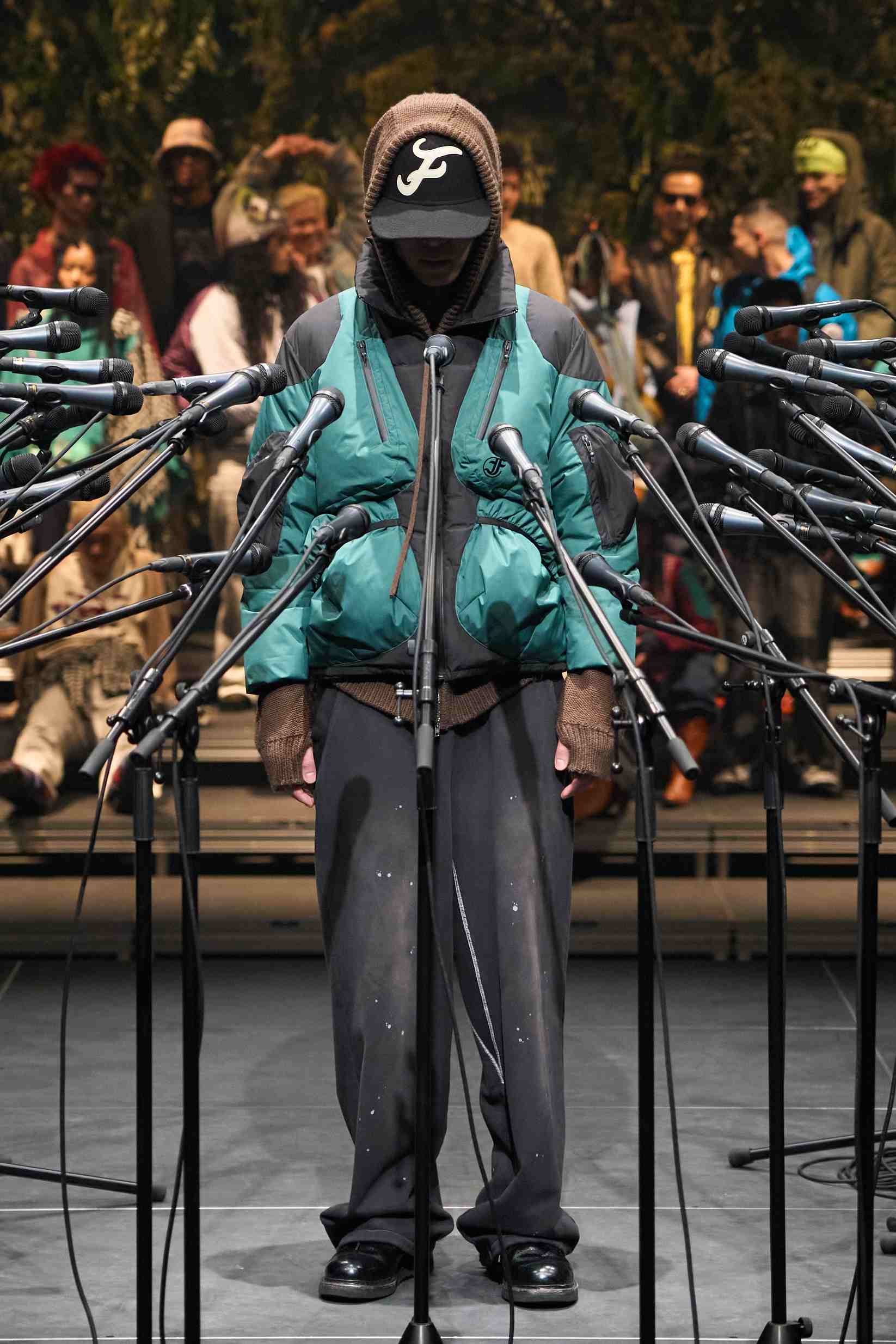







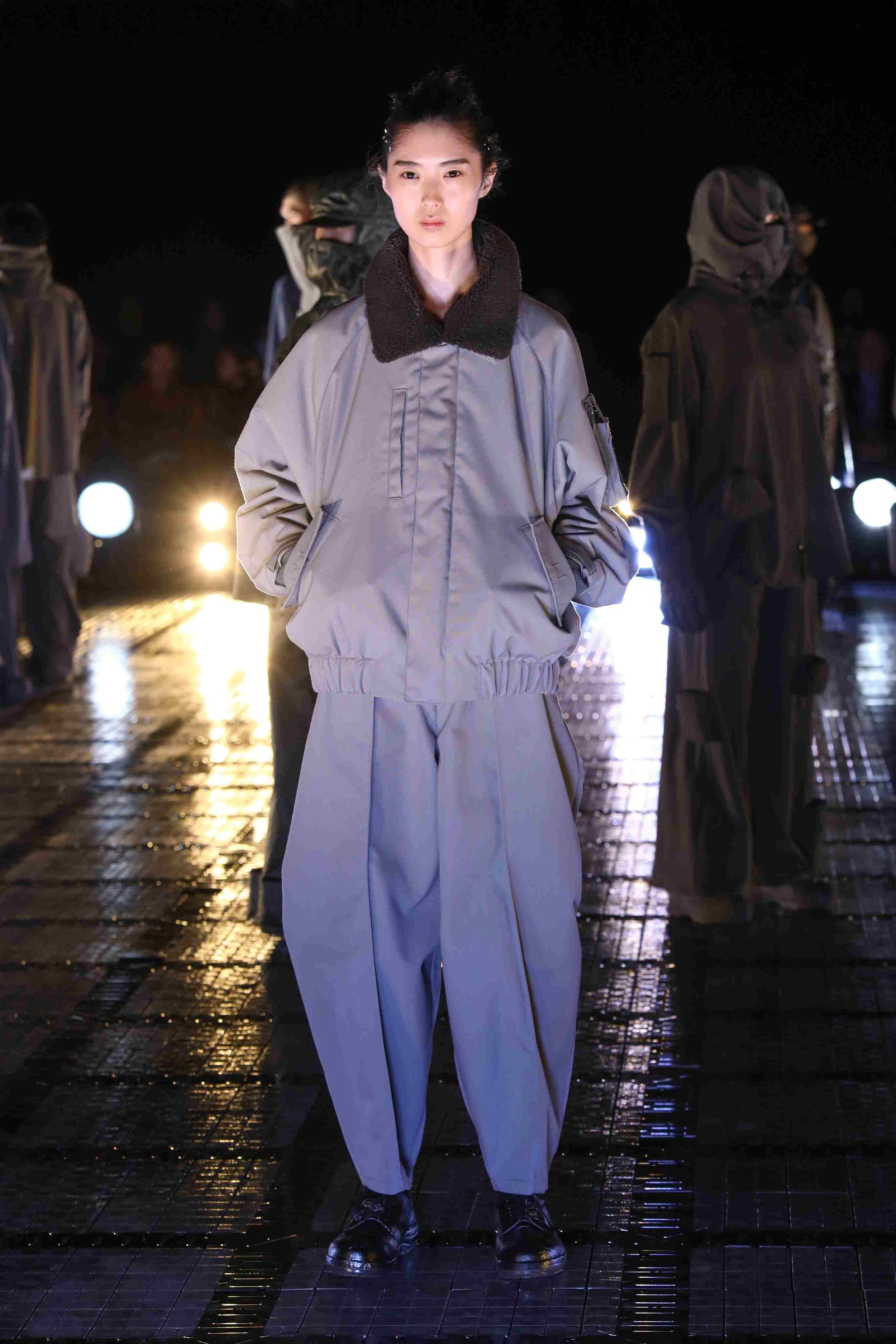



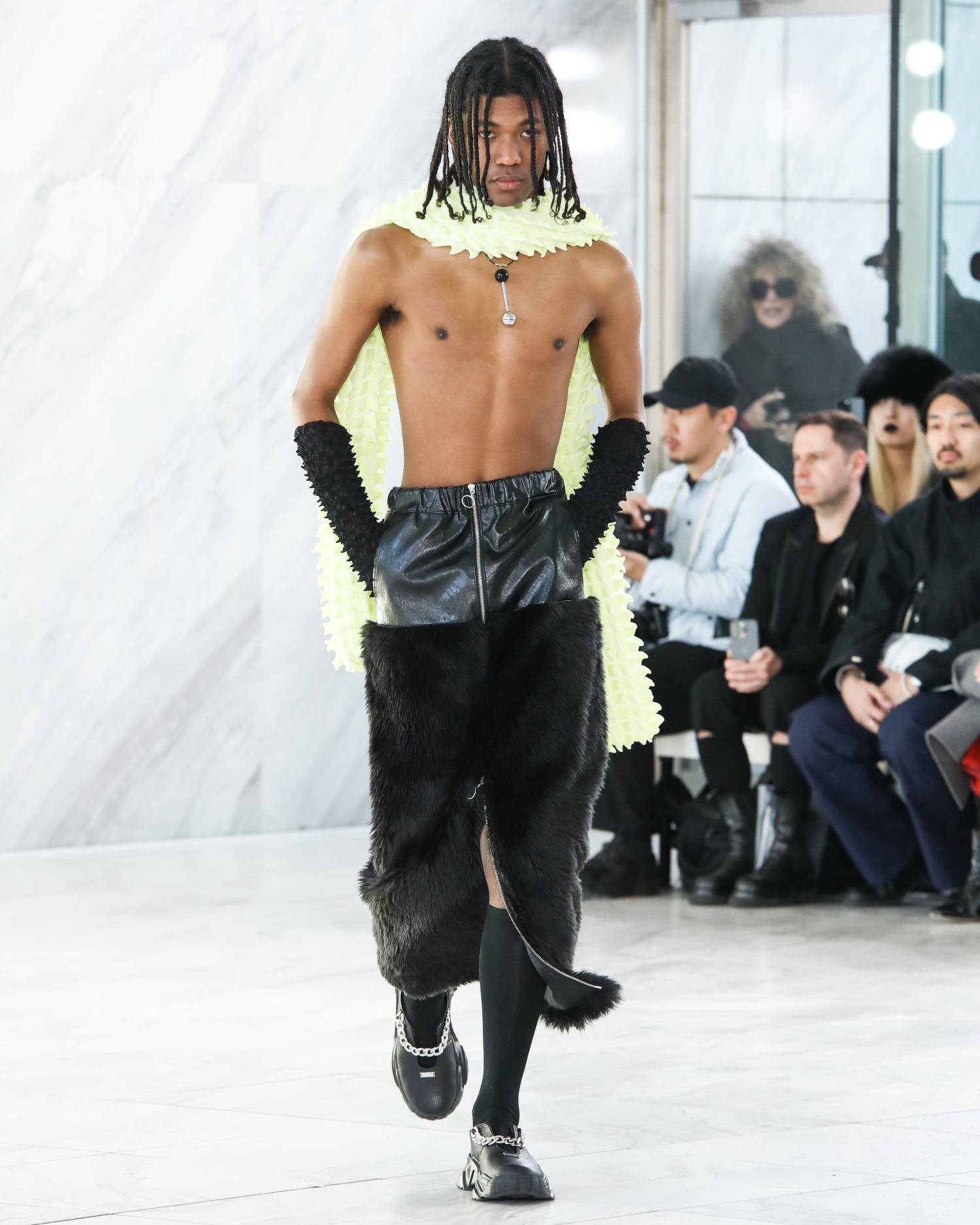








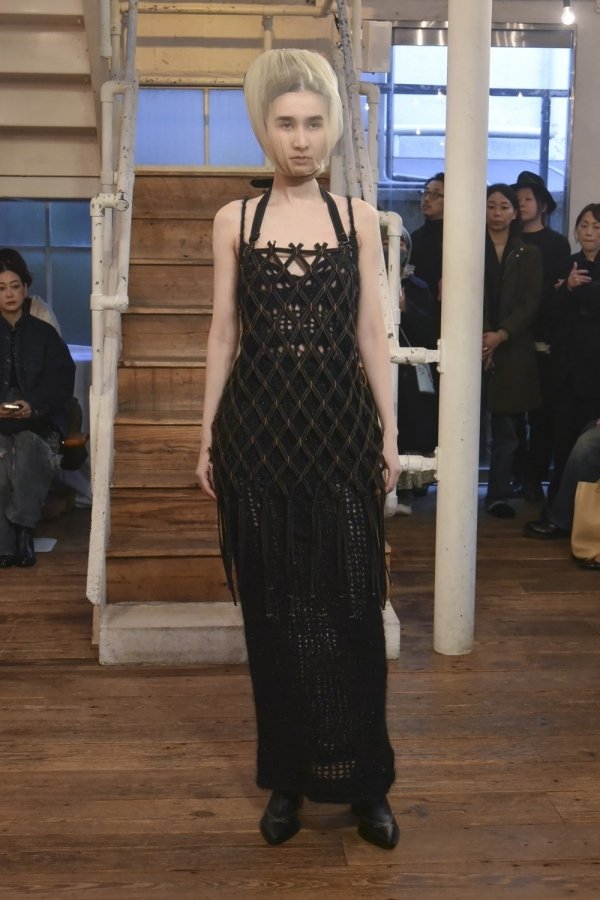







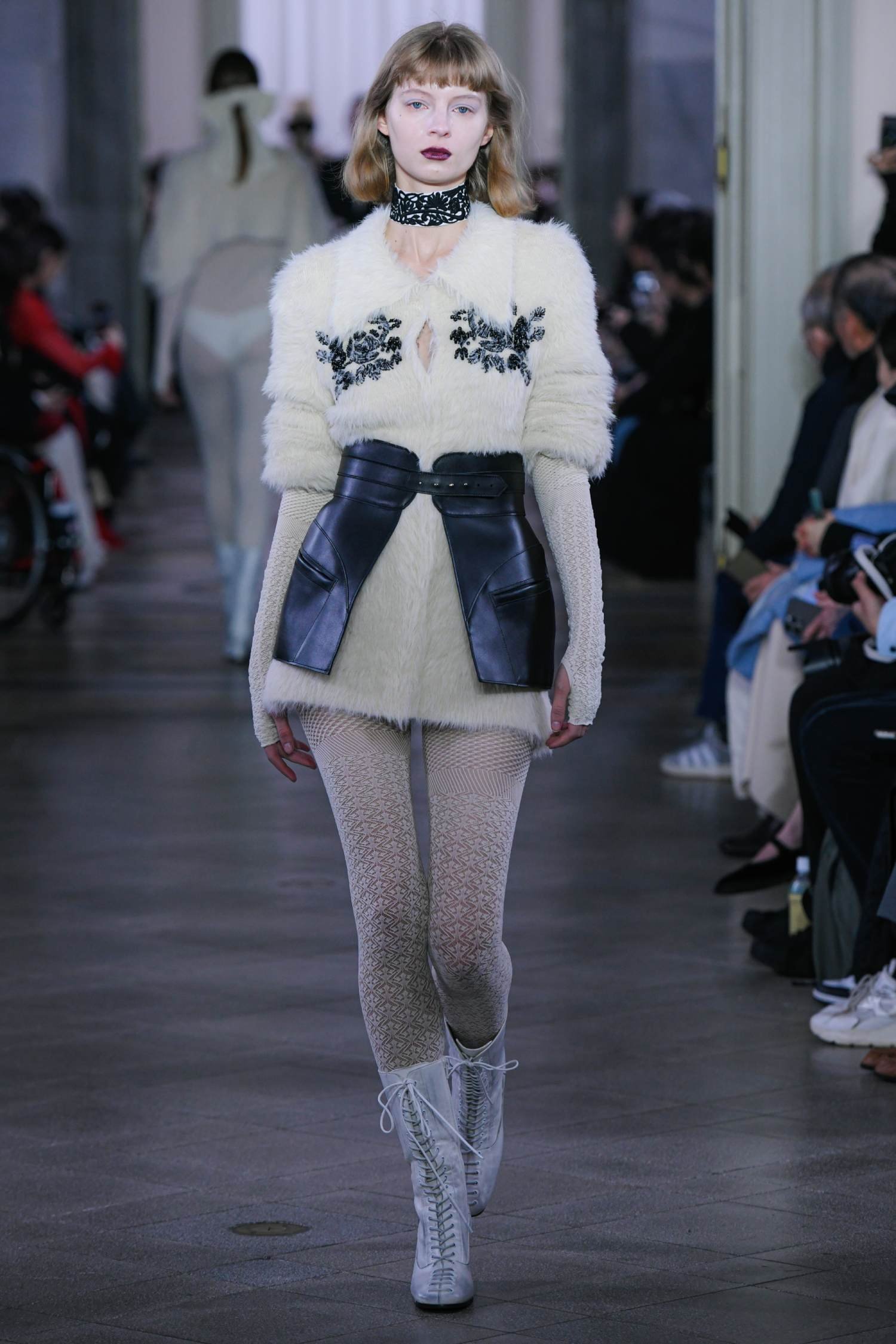


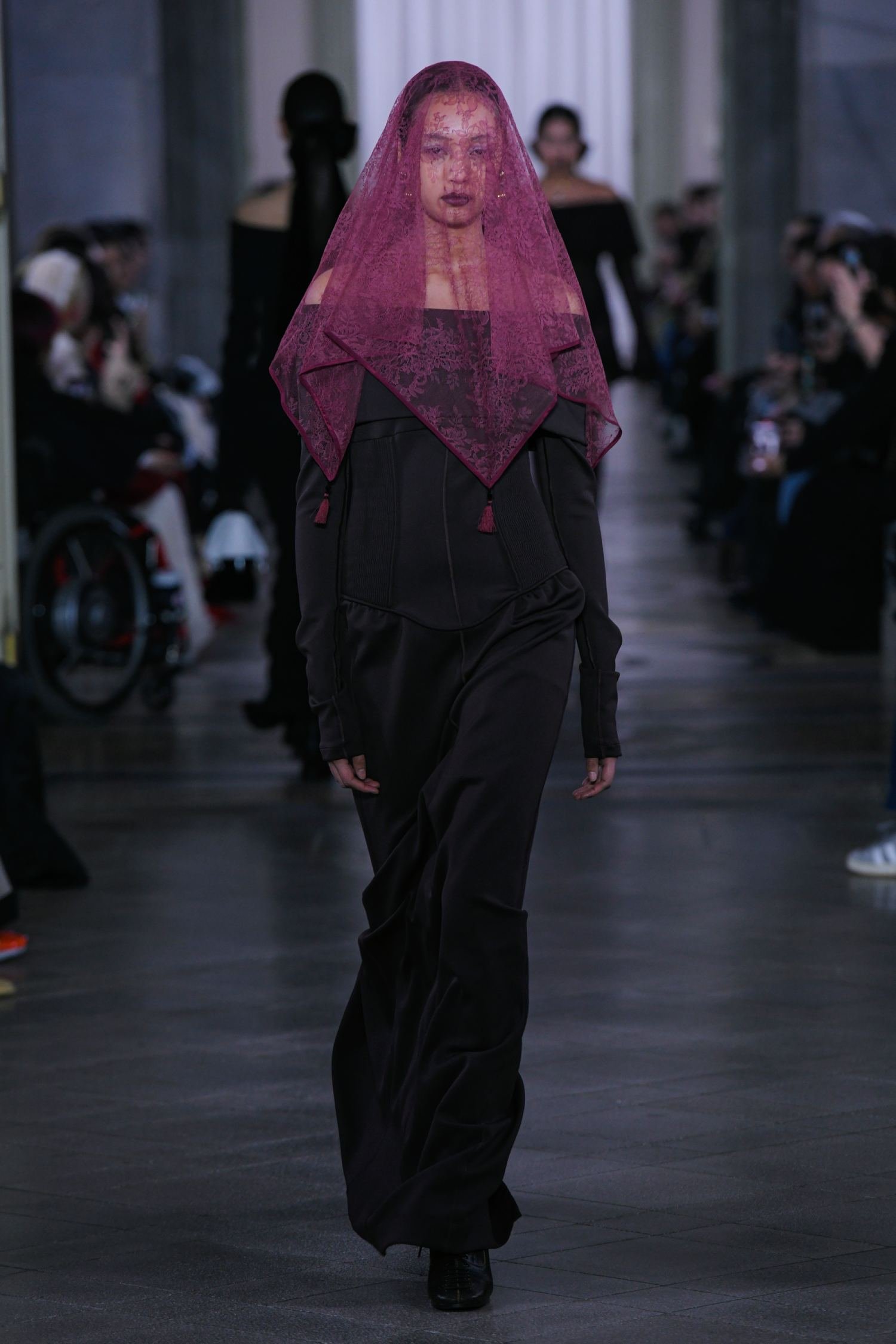





























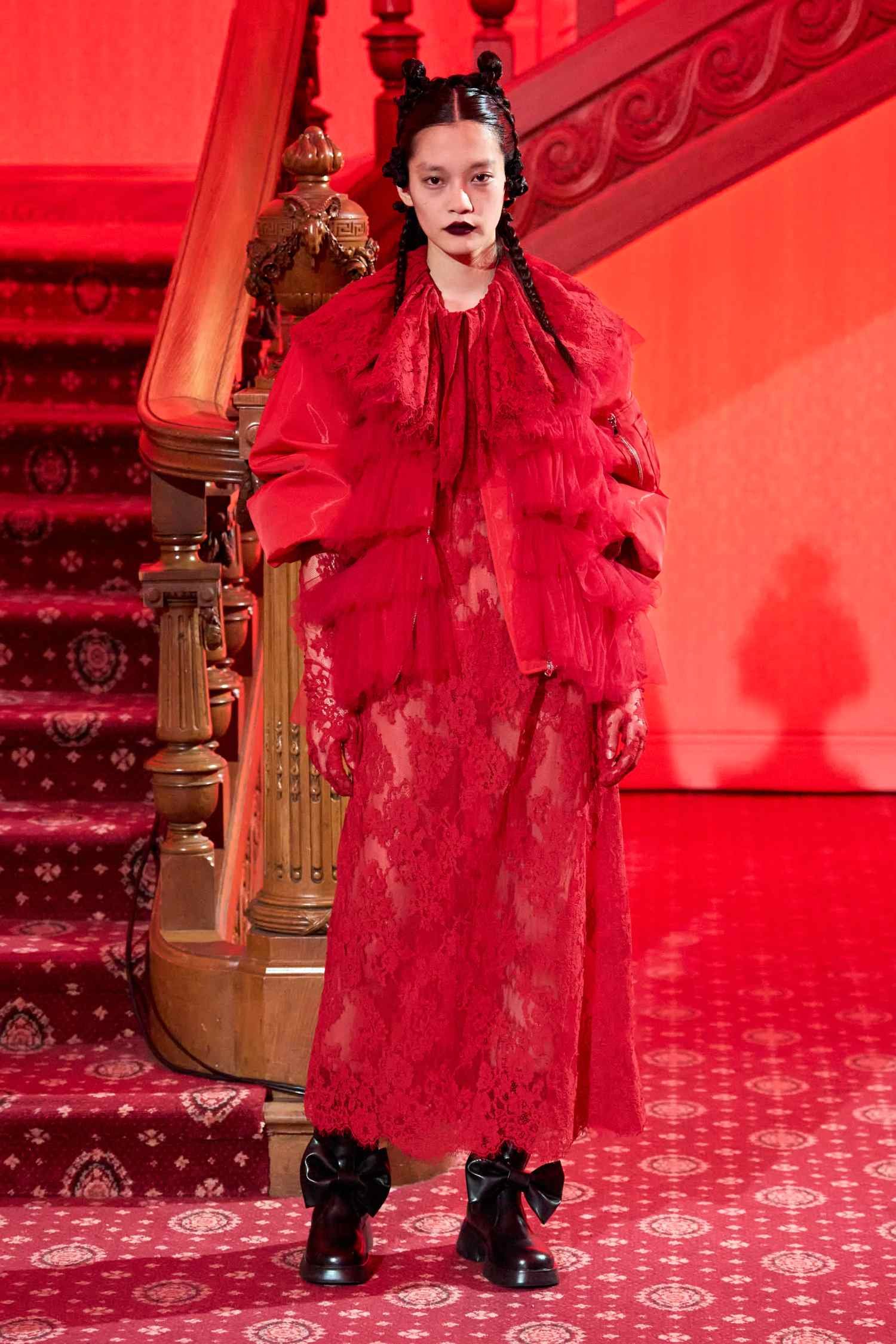








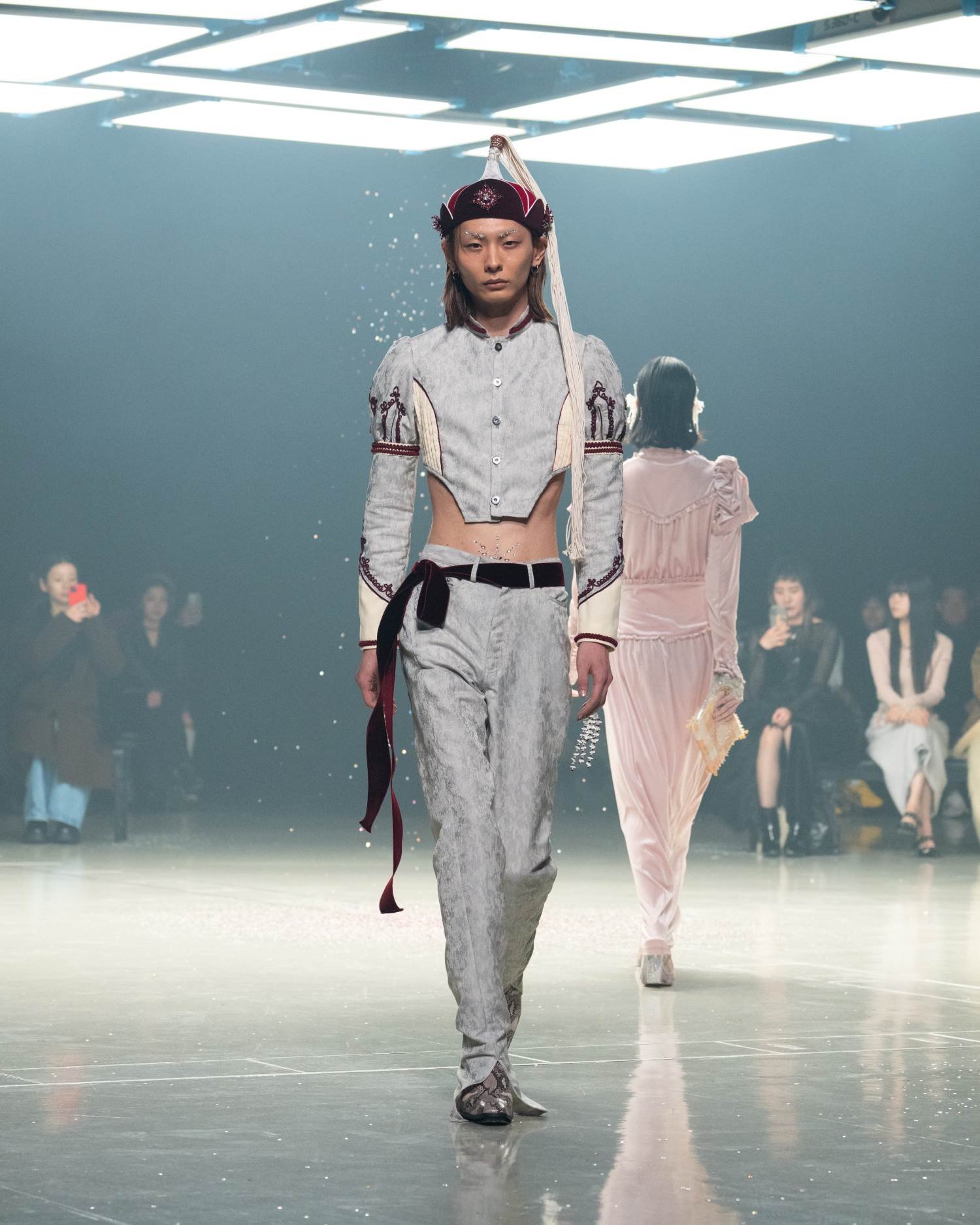





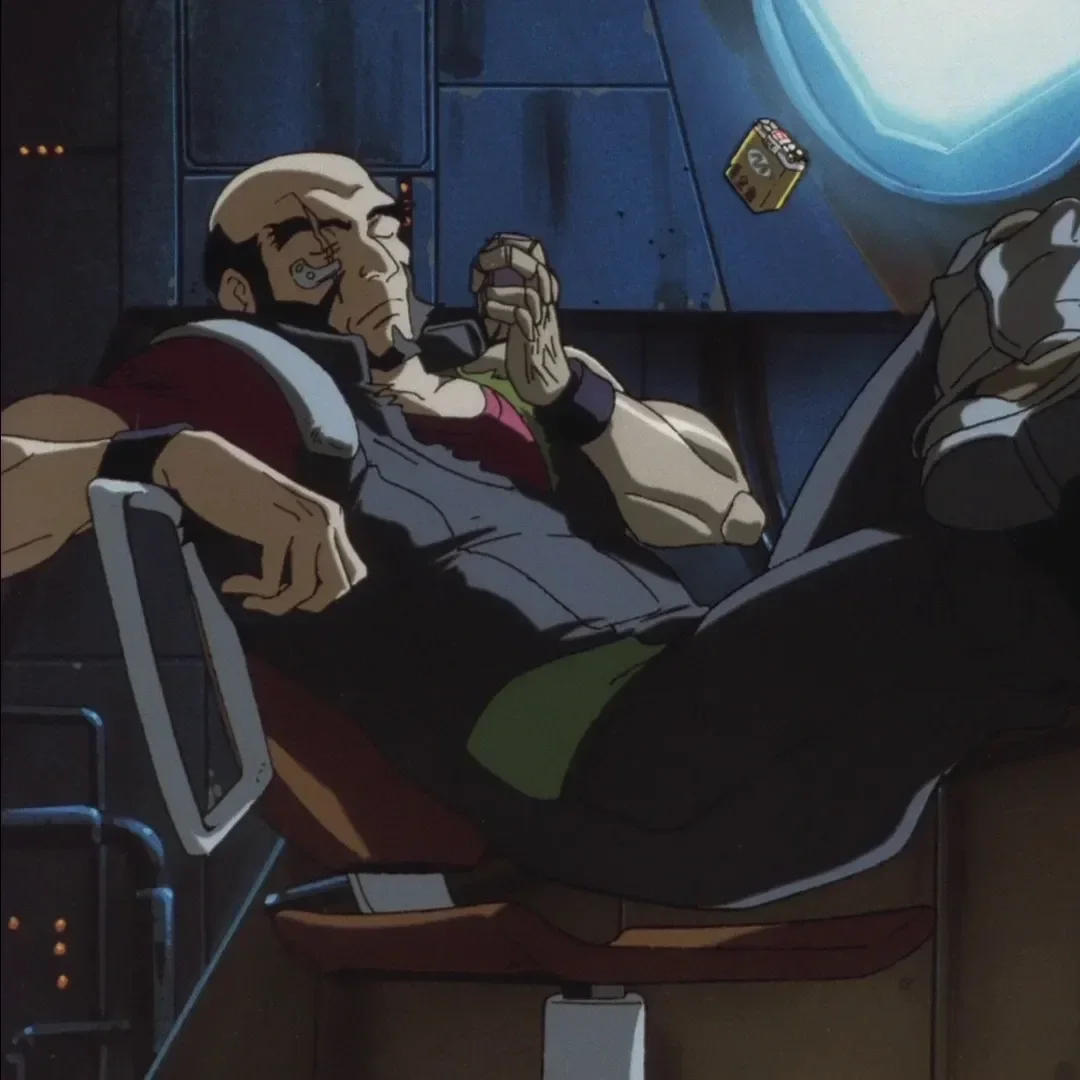
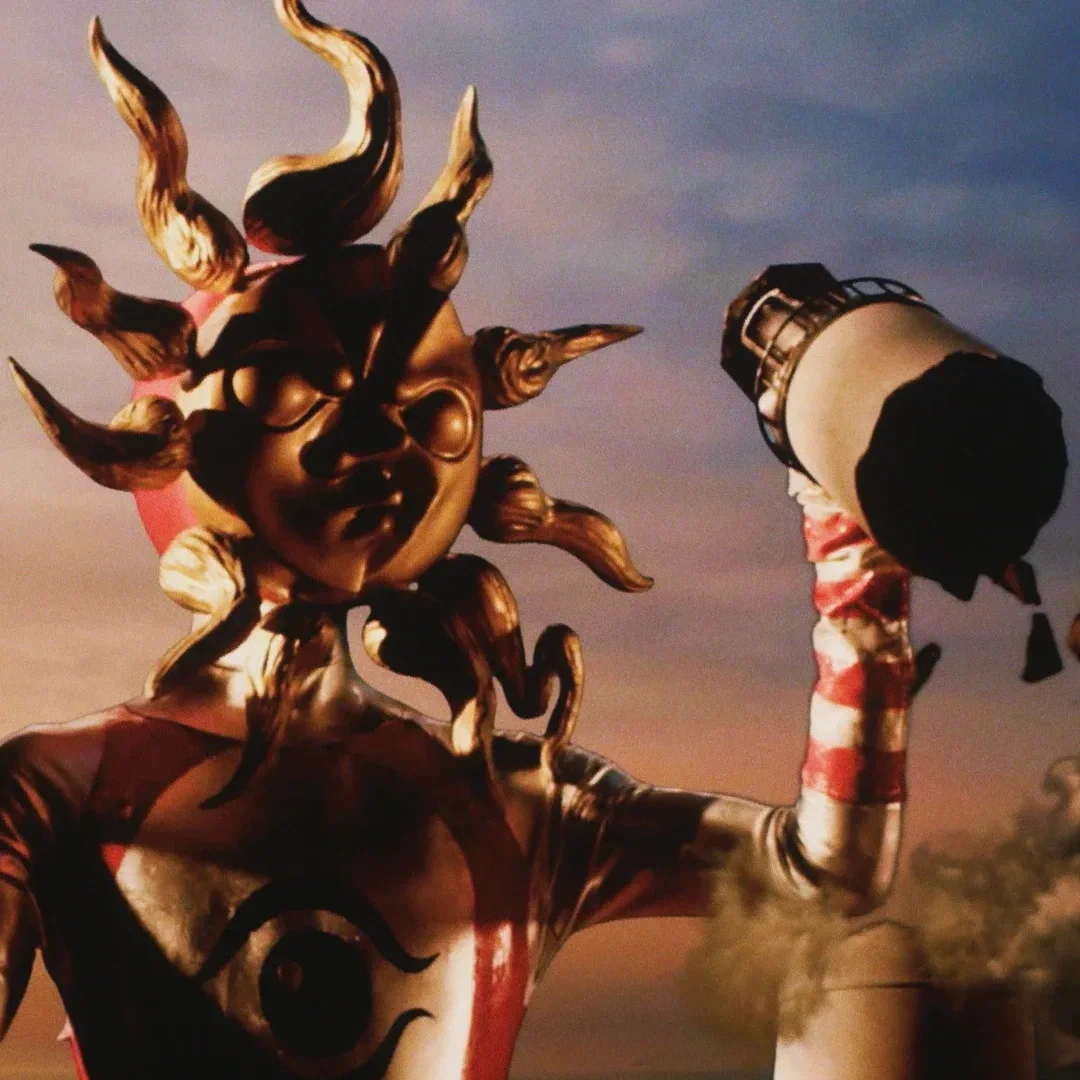

Before Harajuku, Shoichi Aoki archived the world’s fashion.